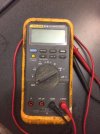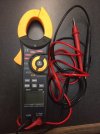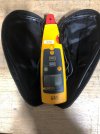sly_karma
Crew Member
About time I moved up to a decent quality multi meter and I'm looking for recommendations. Main purpose is working on boat and outboard electrical systems and telephone cable testing at the ski hill (signal cable for timing ski races).
Features I want are:
* auto power off
* auto ranging
* DC milli amp (looking for current leaks)
* frequency/duty cycle
Anyone have one they can recommend? Post pros/cons or in service review if possible. Thanks in advance.
Features I want are:
* auto power off
* auto ranging
* DC milli amp (looking for current leaks)
* frequency/duty cycle
Anyone have one they can recommend? Post pros/cons or in service review if possible. Thanks in advance.





